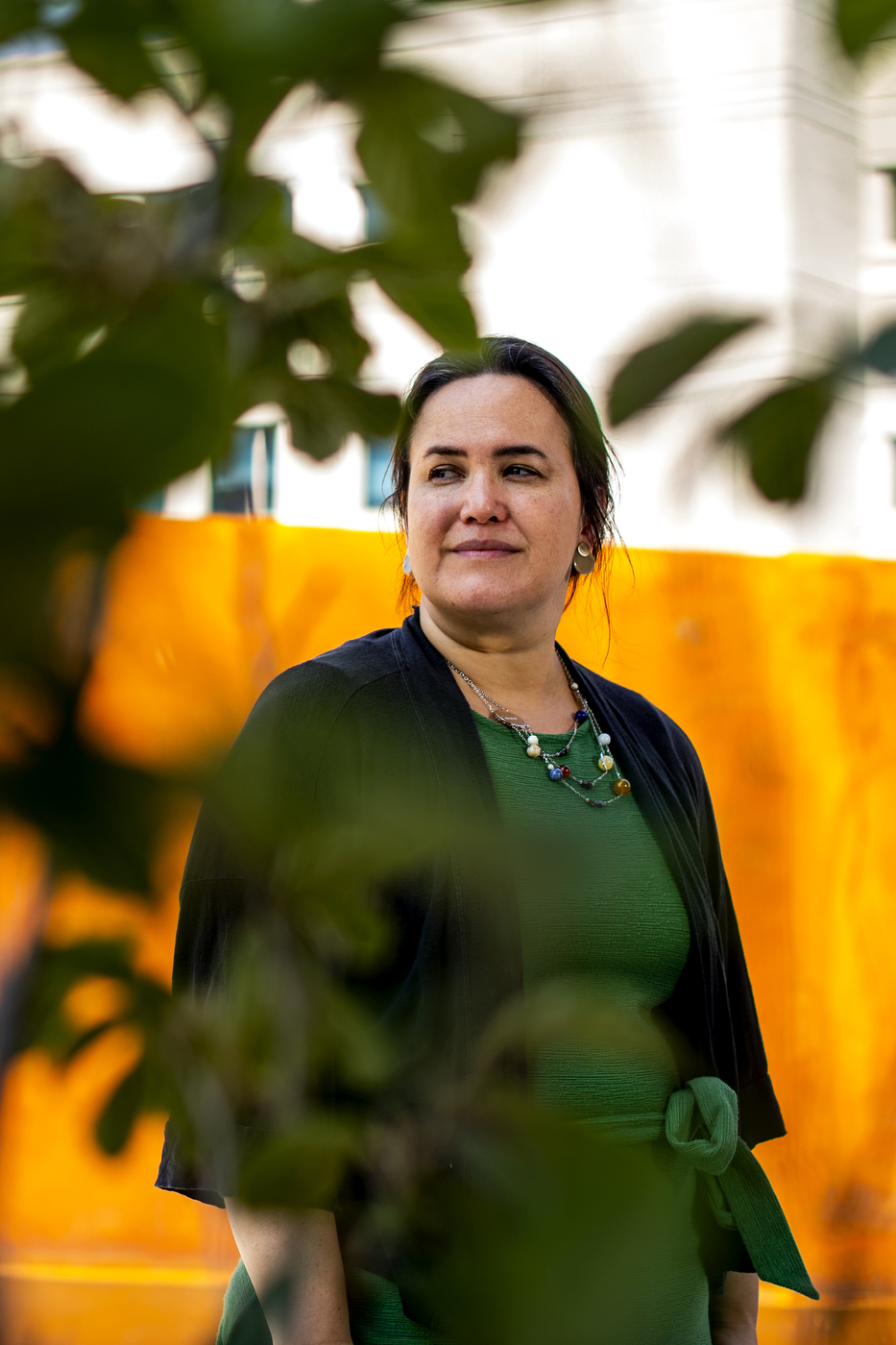
By Emily Arntsen
News at Northeastern
Cities that are organized on grids are more than just convenient. They’re good for your health too, according to Sara Jensen Carr, assistant professor of architecture. Americans learned that the hard way in the 1800s during the cholera outbreaks, when infected water would pool in crooked, unpaved streets.
“During this time, there was a coordinated movement to get all of the waste out of the streets and bring fresh water to houses,” Carr says. “The net effect is that we have straighter streets to accommodate long pipes underneath to move water and waste more safely.”
Carr is writing a book, The Topography of Wellness, that chronicles six health crises throughout U.S. history and how those epidemics have informed the design of our cities. In addition to infectious diseases like cholera, yellow fever, and tuberculosis, Carr focuses on “social diseases” like crime and chronic illnesses, such as struggling with weight loss and self image, and how those either influence, or are influenced by, changes in American urban landscapes.

“The city was really thought of as an incubator of disease for much of American history,” says Sara Jensen Carr, assistant professor of architecture at Northeastern. Photo by Matthew Modoono/Northeastern University
“The city was really thought of as an incubator of disease for much of American history,” Carr says. That was especially true in the early 19th century when people believed in a theory called miasma, the idea that diseases floated aimlessly through the air and water.
“This really terrified people,” Carr says. During the Industrial Revolution when cities became densely populated, people started to worry about crowded housing conditions for fear of catching the “bad air.” As a result, Carr says, toward the end of the 19th century, there was a huge push to design buildings and outdoor areas that brought in fresh air and sunlight.
Around this time, the landscape architect and public health officer Frederick Law Olmsted started designing public parks, such as the Emerald Necklace in Boston and Central Park in New York City. “Even though he didn’t have a lot of scientific knowledge to back it up, he knew intrinsically that we needed space to breathe,” Carr says.
Public parks became even more popular as tuberculosis swept through the U.S. at the turn of the 20th century. “The interesting thing about tuberculosis is that air and sunlight were actually very curative,” Carr says.
Photos from early 1900s “consumption” hospitals designed to treat tuberculosis patients show people lying outside in beds, sunning themselves, as a form of treatment. More affluent patients could afford to rig up their beds in “window tents” to sleep in fresh air without leaving the comfort of their bedroom.
These disease-inspired designs continued into the 20th century. “Tuberculosis influenced a lot of architecture and urban planning up to about the 1960s, especially in modern public housing,” Carr says.
The mid-20th century also marked the beginning of the urban crisis in American cities, during which racial tensions were high, and wealthy white citizens began moving to the suburbs, taking business with them.
“Cities were in ruin,” Carr says. “There was this ephemeral boogey man of blight in cities.” But instead of fearing miasma and “bad air,” people now feared things like violence and drugs. “There was a lot of conflating of poor neighborhoods with disease,” she says.
“People were cutting down wide swaths of the city and building federal highways, making literal walls around poor neighborhoods, basically quarantining immigrant and minority populations through housing covenants,” Carr says.
Essentially, these covenants were contracts that stayed with the land, regardless of the owner, that prohibited non-white people from purchasing or renting that property. And a lot of these covenants actually used health as an excuse to exclude owners by race.
“There’s a history of covenants all the way up to the 1960s that say homeowners should not sell their properties to African-Americans because they have higher rates of mortality than white homeowners,” Carr says.
But while the white flight movement to the suburbs in the mid-20th century originally excluded people of color, Carr says that we’re now seeing the opposite trend. “There’s actually a pattern now of minority and immigrant populations moving out to the suburbs farther away from jobs.”
The latest health crisis that Carr researched for her book is the link between suburbia and obesity. “People in the suburbs have to spend more time in cars commuting. They don’t have time to exercise. They’re not able to walk to the grocery store,” Carr says. “Suburban sprawl is not the cause of the obesity epidemic, but a lot of people agree that it’s certainly a contributor.”
These are some of the consequences Carr hopes designers will consider more seriously in the future. “We need to start addressing the health needs of our communities and account for the unintended fallout of what we’ve done in the past,” she says.
(Reprinted with permission from the News at Northeastern.)


















